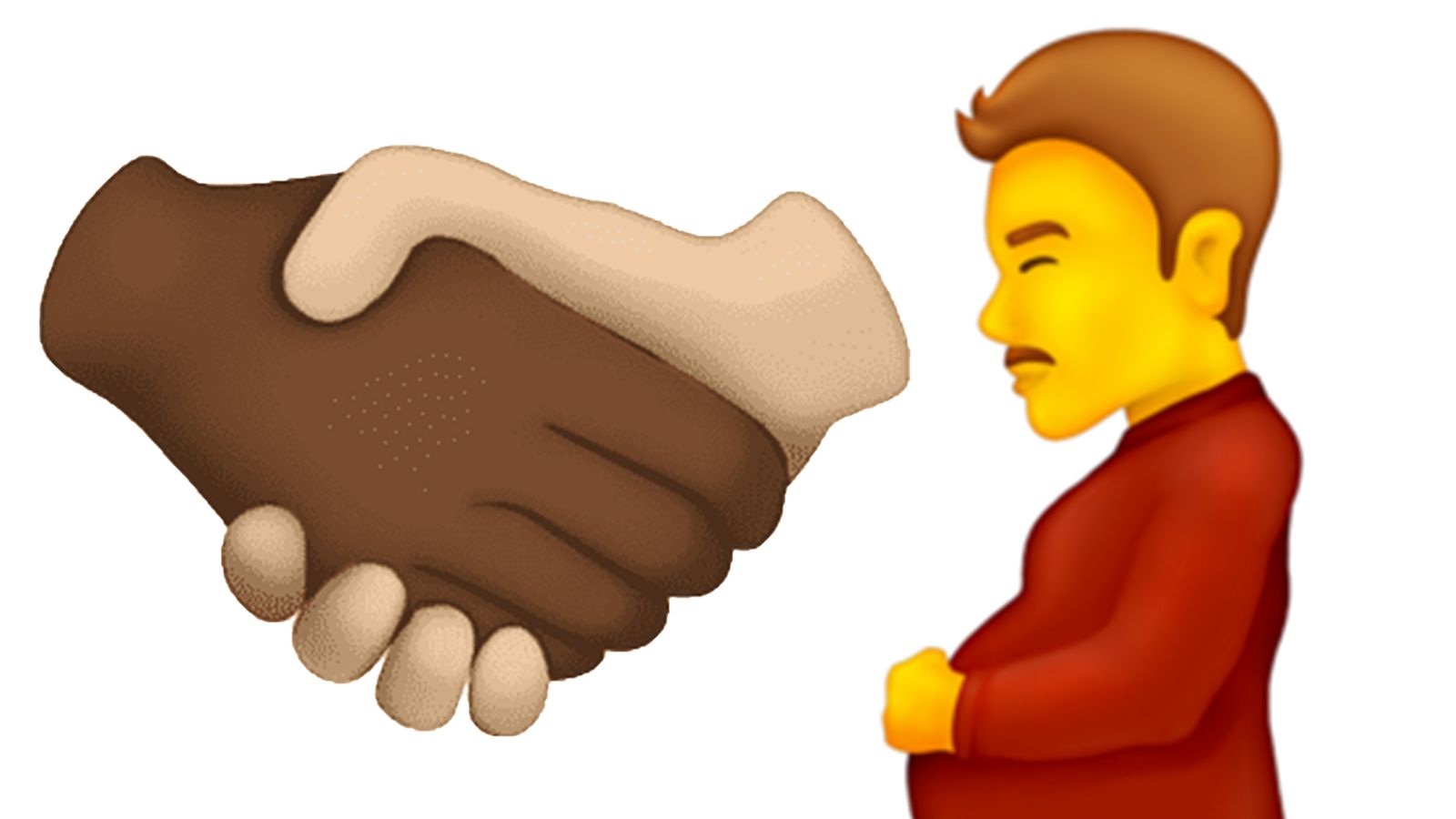A pregnant man and a handshake featuring different skin tones are among the newest emojis to be released by the Unicode Consortium, and will appear on devices in the coming months.
The draft list of the newest emojis released earlier this year by the Unicode Consortium, a non-profit company that promotes the unicode standard, aims to show more diversity in gender.
Now that the list has been confirmed and released, containing 37 new emojis – taking the total to 3,633, it will be used by companies to design their own versions which are expected to debut next year.
Same-sex couples and gender-neutral emojis were among a raft of inclusive images added to the global library in 2019, but the regulator faced criticism after the transgender flag and symbol were left out.
The new pregnant man and pregnant person emoji mark another attempt to increase the diversity of emojis by showing that people of any gender can be pregnant.
Back in 2019, Freddy McConnell, one of the few transgender men in the UK to have given birth, warned that misinformation from the medical profession about the ability for trans men to give birth amounted to “de facto sterilisation”.
And following more than a year of heightened awareness and global protests surrounding the fight for racial equality, sparked by the murder of George Floyd, the Unicode Consortium will also allow users to display handshakes between hands of different skin tones.
We Buy Any Car, Saga, and Sports Direct fined £495k for sending 354 million nuisance messages
Former US intelligence officers admit to mercenary hacking for United Arab Emirates
SpaceX: Who are the civilians on the Inspiration4 mission?
Additional new emojis include hands making a heart shape and someone biting their lip – plus faces melting, saluting, holding back tears, and peeking out between their fingers.
The vast majority of emojis available will also be able to be presented as a man, a woman, or gender-neutral – for instance, now available alongside the prince and princess emojis is a person with crown emoji.
The unicode standard sets the code that references particular emojis, allowing companies like Apple and Google to design their own emojis based on the descriptions. They usually introduce their own takes on new emojis via smartphone software updates.






















